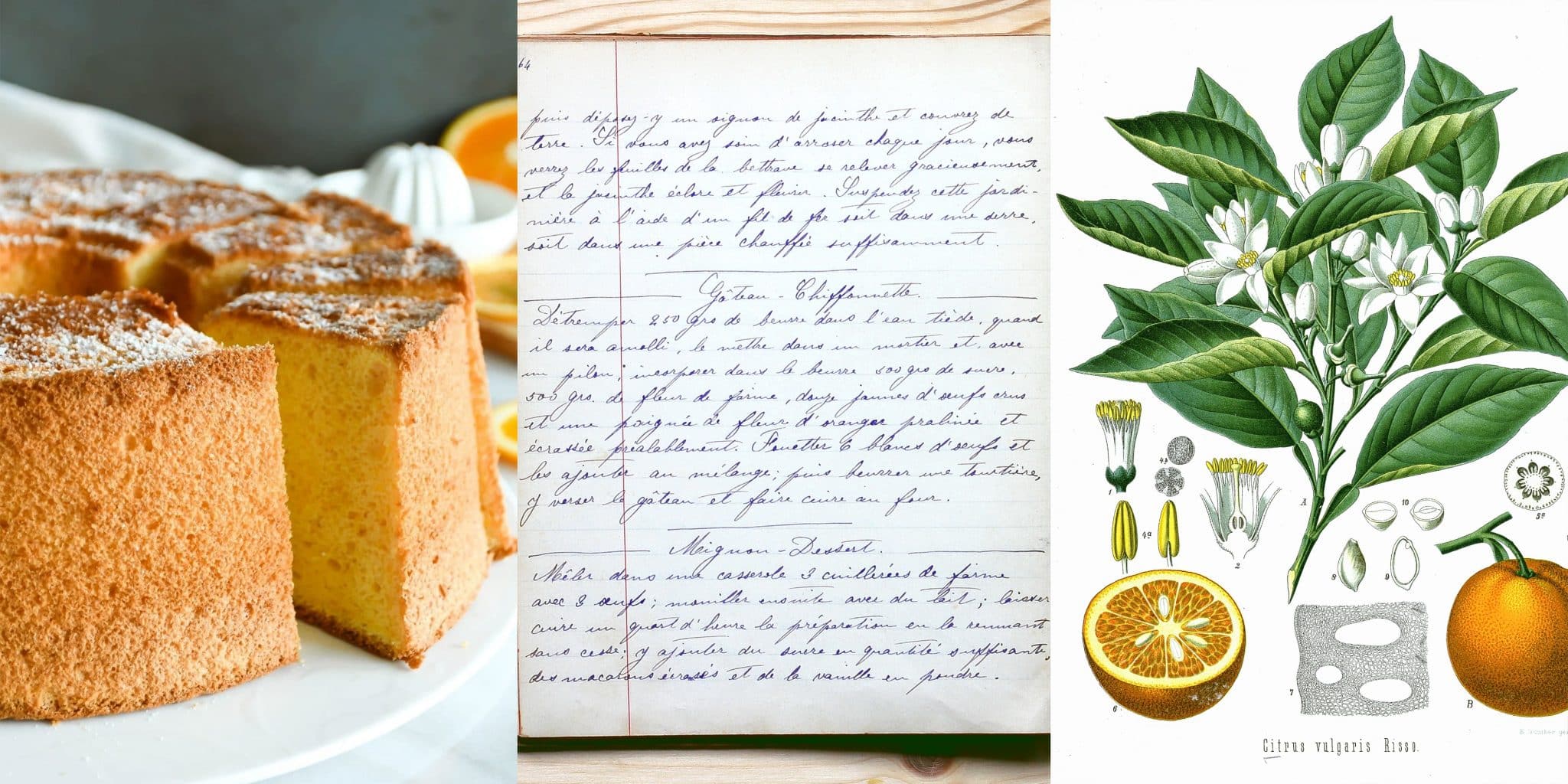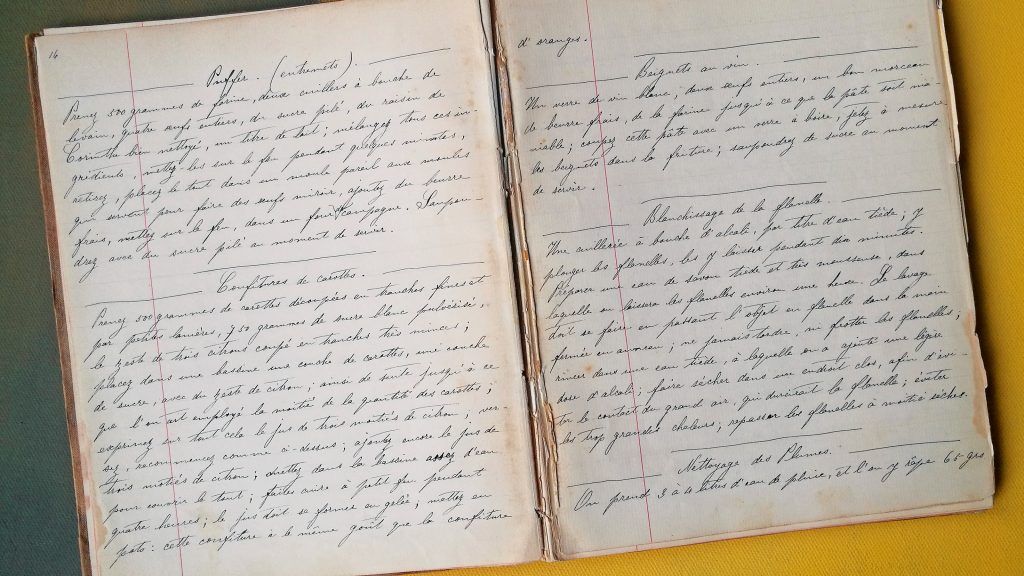
Digitized Booklet “Recettes de Cusine”
More than recipes, a way of life
A translation of a recipe notebook from 1900, written in four languages and taken by the author all the way from Paris to Bacău and Câmpulung at the beginning of the last century, cannot today remain a mere translation. It is, first and foremost, an immersion in the culinary context of an era on the borderline between old and modern.
While working on transcribing and understanding the dishes presented in Maria Cantilli Golescu’s notebook – together with Mona Petre, Nona Henti and Aura Pandele – we reveal small fragments of national culinary history heavily influenced, as was the case at the time and continued until after the middle of the 20th century, by French cuisine, but also archaic, extremely picturesque ways of cooking, or, as we find in the recipe we offer as an example, a series of ingredients surrounded by an aura of mystery.
Transcripts and translations
This is also the case of the Chiffonnette cake (in transcripts and translations booklet on page 64) described as follows:
”Détremper 250 grammes de beurre dans l’eau tiède; quand il sera amolli, le mettre dans un mortier et, avec un pilon, incorporer dans le beurre 300 grammes, 500 grammes de fleur de farine, douze jaunes d’œufs crus et une poignée de fleur d’oranger pralinée et écrasée préalablement. Fouetter 6 blancs d’œufset les ajouter au mélange, puis beurrer une tourtière, y verser le gâteau et faire cuire au four.” – original French transcript
“Soak 250 g of butter in lukewarm water; when the butter has softened, place it in a mortar and pestle and stir in 300 g of sugar, 500 g of very fine flour, twelve raw yolks and a handful of orange blossoms, pralinée and crushed beforehand. Beat 6 egg whites and add them to the above mixture, grease a pie tin with butter, pour in the cake and bake in the oven.”
“Praline orange flowers”. A mystery ingredient for us today, on which we asked the advice of our chef friends involved in this notebook and dishes recovery project. Should orange blossoms simply be sugared, as they are made with egg white and powdered sugar? Or are they truly pralined in the red, brittle crust of melted sugar? Contemporary gateau chiffon recipes have lost this special ingredient along the way and offer no clarification. It’s a (seemingly) small detail, perhaps easily overlooked at a first reading, but in the eyes of those fond of the cuisine of past centuries it is nothing short of a small gem.
Photo sources:
- Modern Chiffon Cake (https://www.foodelicacy.com/orange-chiffon-cake/)
- Maria Cantilli Golescu’s notebook, 1900, photo: Mona Petre.
- Orange blossom, historical botanical illustration from “Köhler`s Medizinal Pflanzen (1883-1914)”.
“Maria Cantili Golescu’s Culinary Diary-recipes, tastes, objects and experiments” is a cultural project of Pro Patrimonio Foundation co-financed by the National Cultural Fund Administration.
Media partners: Scena 9, Rock FM, Muscel TV
Friend project: “Ierburi uitate”
The digitised workbook, “Recettes de Cusine”, can be found in the Foundation’s library of useful resources here

Read also:
The Culinary Diary of Maria Cantili Golescu-recipes, tastes, objects and experiments


